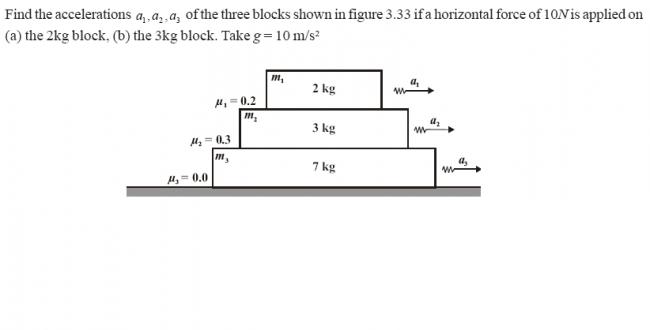a)
when force acts on 2kg block:
for f.b.d of 2kg block
fmax= (0.2)2.10= 4N
10 - f1= 2a1
a1 = 3 ms-2
for 3kg block:
f1 - f2 = 3a2 ;... (1)
for 7kg block:
f2= 7a3;... (2)
now, f2 will assume the value such that the realtive motion between 3kg n 7kg block is minimum.. (friction is based on relative motion btw the surfaces)
since, f2 (max)= 15N;
a2=a3
so, solving these..
a2=a3= 0.4 ms-2
now,
when force acts on 3kg block:
f1= 2a1... (1)
10 - (f1 + f2) = 3a2.. (2)
f2= 7a3.. (3)
now, the friction adjusts itself in such a way that relative motion is least among all surfaces. so, the accelerations of blocks should be the same so that relative motion is zero.. (note that this case is not always valid.. (sometimes the friction values may not permit this.. lets try out here)
hence
a1=a2=a3=a
so solving (1), (2), (3)
a=5/6 ms-2
the case is exactly same for the third part.
